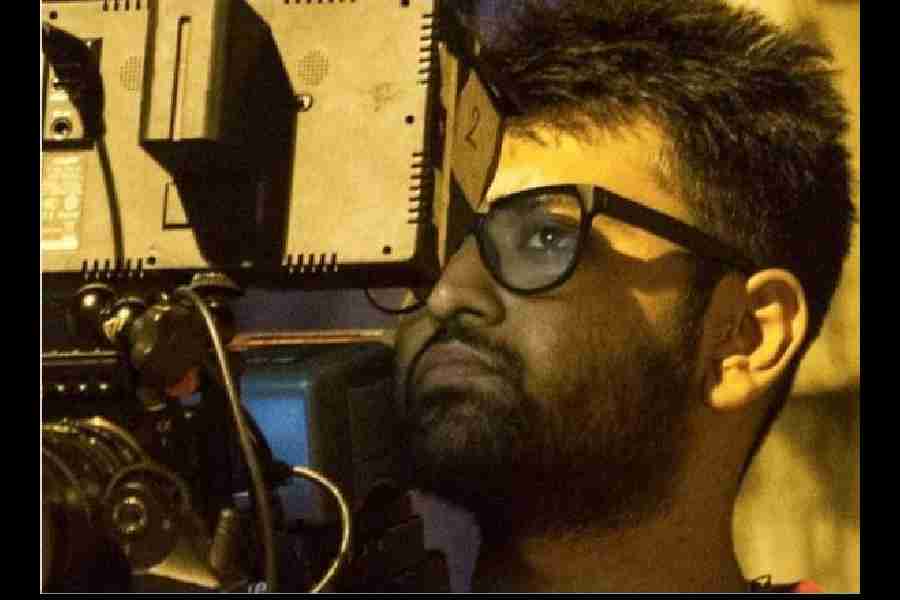Calcutta-based film-maker Lubdhak Chatterjee’s debut feature film Whispers of Fire & Water has been selected to screen at the prestigious Locarno Film Festival. Ahead of the screening on August 8, t2 chatted with Lubdhak about his film and the honour it has been bestowed with.
What does the official selection at the Locarno Film Festival mean to the film and to you?
Having my debut feature at Locarno is in itself a big honour. It has been such a big festival and a film from Calcutta is going there after 15 years. For a completely independent film-maker like myself to be selected at such a prestigious festival gives me the confidence that if you do good work, it gets recognised. At the end of the day, we all want our films to reach out to a global audience. Being in Locarno is a great start and it will help the film travel to many other places in the next year or so.
What was the genesis of Whispers of Fire & Water?
This film is entirely shot in Jharkhand, with parts of it being filmed in the coalmine region of Jharia, which is right next to Dhanbad. The rest of it was shot in the Palamau Tiger Reserve. I have been visiting Jharkhand, Bihar and parts of interior Uttar Pradesh over the last few years for professional assignments, as a director and cinematographer.
When I visited Jharia for the first time in 2018-19, the sight of the colossal coalmine and the catastrophic fire... the region has been burning for over 100 years now... struck me. My tryst with meeting tribal people for many years now also led to certain questions which brought on an internal journey. It questioned my role and responsibility as an art practitioner. All these factors became the root of this film. So this film has its genesis in my personal experiences.
The protagonist of the film is a sound recordist and I have always been interested in the art of sound in film-making. That is also explored in my documentary debut Vaikhari (2018) which focuses on rhythmic utterances. In my short film Aahuti, which was in Rotterdam (Film Festival), we also experimented a lot with sound.

Lubdhak Chatterjee
One would imagine that there would be quite a few challenges in making this film....
It is an independent film and most of the challenges were at the production level. Shooting outstation, even with a very small crew, requires resources. We shot in a very tricky place like a mining zone, and had to negotiate many factors. But I had a very good team where everyone multitasked. Engaging with the local people and making strong contacts in the mining zone as well as in the forest really helped. The locals also became a part of this production.
We shot the film over 17-18 days and we had the post-production for close to a year-and-a-half. I am grateful to my producers for giving me that much time because we edited and did the sound design simultaneously. That was probably the biggest challenge for me. We had to be patient and give it time and think of the various possibilities that the visuals were giving us. The protagonist is a sound installation artist and hence we had a lot of scope to play with the sound. We focused a lot on the tone and texture of the film.
What do you think you have achieved with this film?
The most notable would be being involved with the sound design aspect. Sougata Banerjee has worked on the sound of the film and we have collaborated on all my films so far and it was very interesting and creatively satisfying working on the sound of this film with him.
How is the scenario now for independent film-making in India?
I don’t see very encouraging signs right now. Yes, we have certain streaming platforms, like MUBI, that are curating independent films but I don’t know the kind of monetary gains that independent film-makers are getting. Even the distribution part is very bleak. This is my first feature film and I will be entering the distribution network only now, but what I have heard from others is that it’s still not encouraging. A lot needs to be done both in terms of exhibition in theatres as well as on OTT platforms. Unless we get the business part right, it just becomes a one-time experience and making a second film becomes as difficult as making the first.
Having said that, we never had streaming platforms even a few years ago and now we have had quite a few independent films, like Ivan Ayr’s Meel Patthar, which have come on Netflix. Other platforms are also giving support. We look forward to a more shared journey in due course of time.
What made you want to be a film-maker?
Academically, I am an engineer and my journey into film-making started very late. I loved still photography but had little engagement with films in school and college. It increased after my shift to Delhi. I started attending a lot of screenings and in 2015, we had a film festival where National Award-winning films like Court, Asha Jaoar Majhe and Chauthi Koot, were shown. I was fascinated and it really touched me. It caused a seismic shift in me and set me off on this journey.










